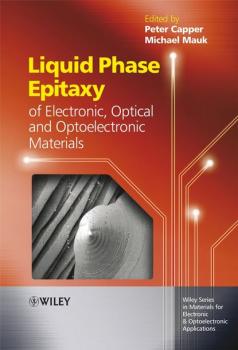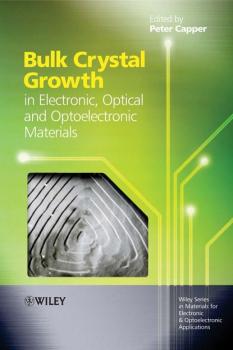ТОП просматриваемых книг сайта:
Peter Capper
Список книг автора Peter CapperАннотация
Liquid-Phase Epitaxy (LPE) is a technique used in the bulk growth of crystals, typically in semiconductor manufacturing, whereby the crystal is grown from a rich solution of the semiconductor onto a substrate in layers, each of which is formed by supersaturation or cooling. At least 50% of growth in the optoelectronics area is currently focussed on LPE. This book covers the bulk growth of semiconductors, i.e. silicon, gallium arsenide, cadmium mercury telluride, indium phosphide, indium antimonide, gallium nitride, cadmium zinc telluride, a range of wide-bandgap II-VI compounds, diamond and silicon carbide, and a wide range of oxides/fluorides (including sapphire and quartz) that are used in many industrial applications. A separate chapter is devoted to the fascinating field of growth in various forms of microgravity, an activity that is approximately 30-years old and which has revealed many interesting features, some of which have been very surprising to experimenters and theoreticians alike. Covers the most important materials within the field The contributors come from a wide variety of countries and include both academics and industrialists, to give a balanced treatment Builds-on an established series known in the community Highly pertinent to current and future developments in telecommunications and computer-processing industries.
Аннотация
A valuable, timely book for the crystal growth community, edited by one of the most respected members in the field. Contents cover all the important materials from silicon through the III-V and II-IV compounds to oxides, nitrides, fluorides, carbides and diamonds International group of contributors from academia and industry provide a balanced treatment Includes global interest with particular relevance to: USA, Canada, UK, France, Germany, Netherlands, Belgium, Italy, Spain, Switzerland, Japan, Korea, Taiwan, China, Australia and South Africa
Аннотация
In this book top experts treat general thermodynamic aspects of crystal fabrication; numerical simulation of industrial growth processes; commercial production of bulk silicon, compound semiconductors, scintillation and oxide crystals; X-ray characterization; and crystal machining. Also, the role of crystal technology for renewable energy and for saving energy is discussed. It will be useful for scientists and engineers involved in crystal and epilayer fabrication as well as for teachers and graduate students in material science, chemical and metallurgical engineering, and micro- and optoelectronics, including nanotechnology.



